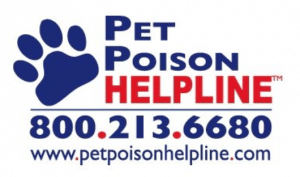“SUGAR-FREE” CAN MEAN A SEVERE XYLITOL TOXICITY FOR YOUR DOG
WHAT IS XYLITOL?
Marketed as a sugar substitute and used widely for people looking for low glycemic index foods. Xylitol can be found in gum, candies, breath mints, baked goods and pudding. But it’s also commonly added to cough syrup, chewable or gummy vitamins and supplements, mouthwash and toothpaste. It may also show up in over-the-counter nasal sprays, laxatives, digestive aids, allergy medications and human prescription medications, especially those formulated into disintegrating tablets or liquids.

WHY IS XYLITOL TOXIC TO DOGS?
In all species, the level of blood sugar in your body is controlled by the release of insulin from the pancreas. Xylitol does not stimulate the release of insulin from the pancreas in humans. However, it does in dogs. When dogs eat something containing xylitol, the xylitol quickly gets absorbed into the bloodstream and the pancreas releases a potent amount of insulin. This rapid release of insulin causes a huge decrease in the level of blood sugar (called hypoglycemia). This occurs within 10-60 minutes after eating xylitol. Untreated, hypoglycemia can be life-threatening.

POISON IN YOUR PURSE OR ON YOUR COUNTERTOP
We all know dogs that like to sniff around inside purses or backpacks looking for a tasty tidbit. Some of our pets are constantly looking for an opportunity to counter surf to collect a coveted snack. These seemingly innocent behaviors could turn deadly since some sugar-free gums have enough xylitol in just 1 piece to cause dangerously low blood sugar levels in an average 20 pound dog. If this 20 pound dog eats 4.5 pieces of xylitol gum they could develop fatal liver failure. Recently more and more baked goods, such as pies and cakes, are labeled as sugar-free and contain xylitol. Dogs jumping on counters or tables to steal away with a piece can consume an alarming dose of xylitol.
WHAT ARE THE SYMPTOMS OF XYLITOL TOXICITY?
Xylitol is extremely toxic to dogs, even in small amounts. Hypoglycemia (low blood sugar) can cause:
- Vomiting
- Weakness
- Lack of coordination or difficulty walking/standing
- Depression or lethargy
- Tremors
- Seizures
- Coma
Symptoms of xylitol poisoning develop rapidly, usually within 15-30 minutes of consumption. In severe cases dogs may develop fatal liver failure.

HOW IS XYLITOL TOXICITY TREATED?
Do not induce vomiting or give anything orally to your dog unless specifically directed to do so by your veterinarian.
Fast and aggressive treatment by your veterinarian is essential to reverse any toxic effects and prevent the development of serious problems. If your pet has just eaten xylitol and has not developed any clinical signs yet, your veterinarian may induce vomiting depending on your dog’s glucose level. If clinical signs have developed, treatment will be based on the symptoms shown. Your veterinarian will perform bloodwork since xylitol can cause low blood sugar and low potassium levels, to determine if these issues need to be treated. In all cases, your pet will need to be hospitalized to have their blood sugar monitored, receive intravenous fluids, receive liver protectants, and any other supportive care that may be needed. Bloodwork should be monitored frequently to make sure that blood sugar and liver function remain normal.
WHAT IS THE PROGNOSIS?
The prognosis is directly related to the amount of xylitol consumed. The prognosis is good for dogs that consumed a lower amount of xylitol and are treated before clinical signs develop.
In cases where xylitol is consumed in higher quantities, liver failure or a bleeding disorder can develop and the prognosis is poor.
IMMEDIATE MEDICAL CARE CAN SAVE LIVES
If you suspect your pet has eaten a xylitol containing product, please contact your veterinarian immediately.
If your veterinarian is unavailable please call a poison helpline and bring your pet to a 24 hour veterinary emergency center.
Animal Poison Control: 888-426-4435

Pet Poison Helpline: 800-213-6680

















Leave A Comment